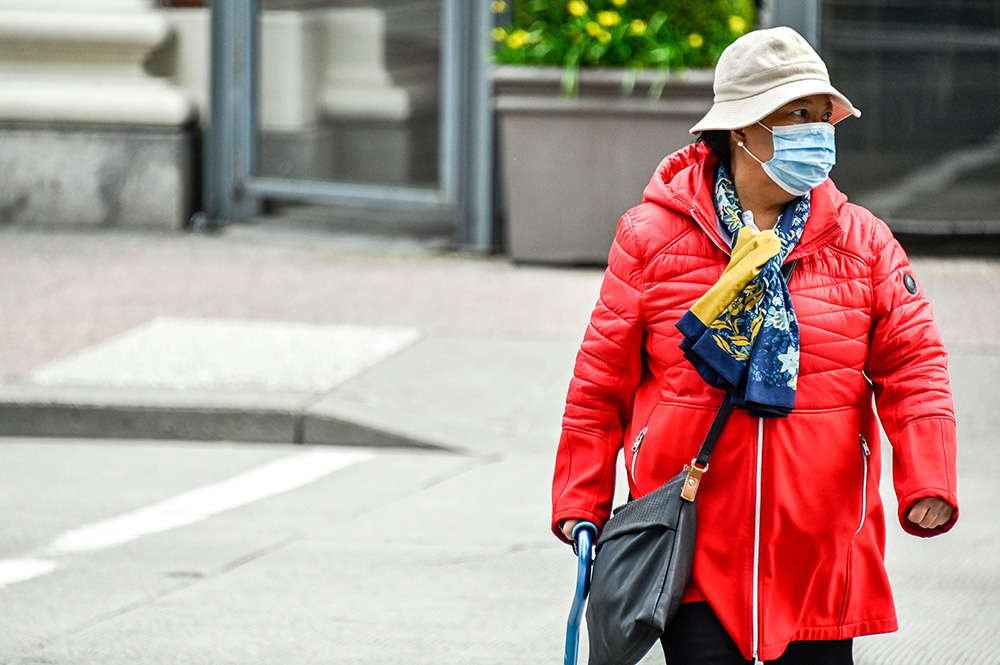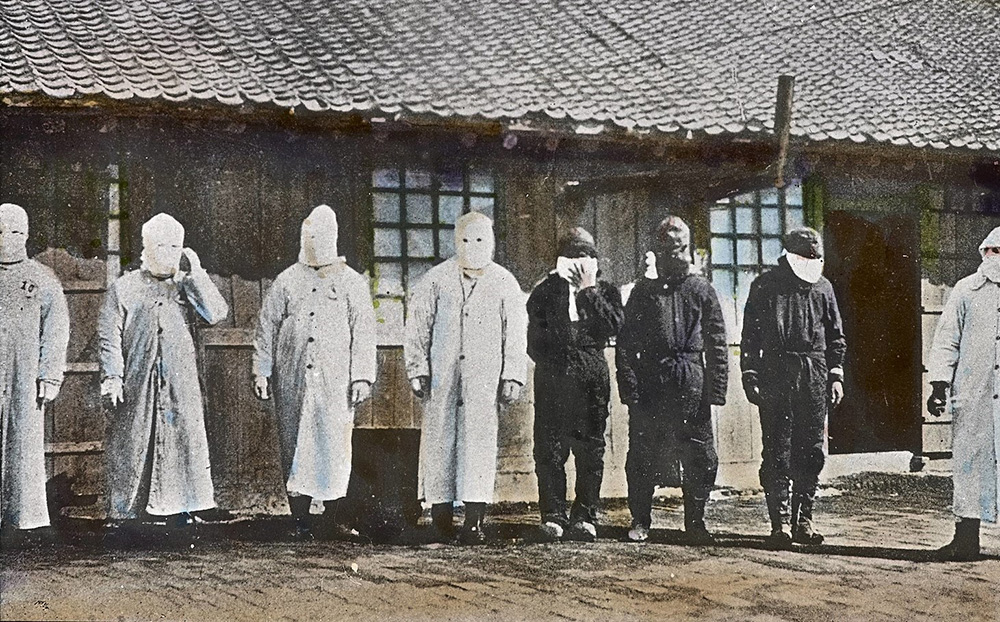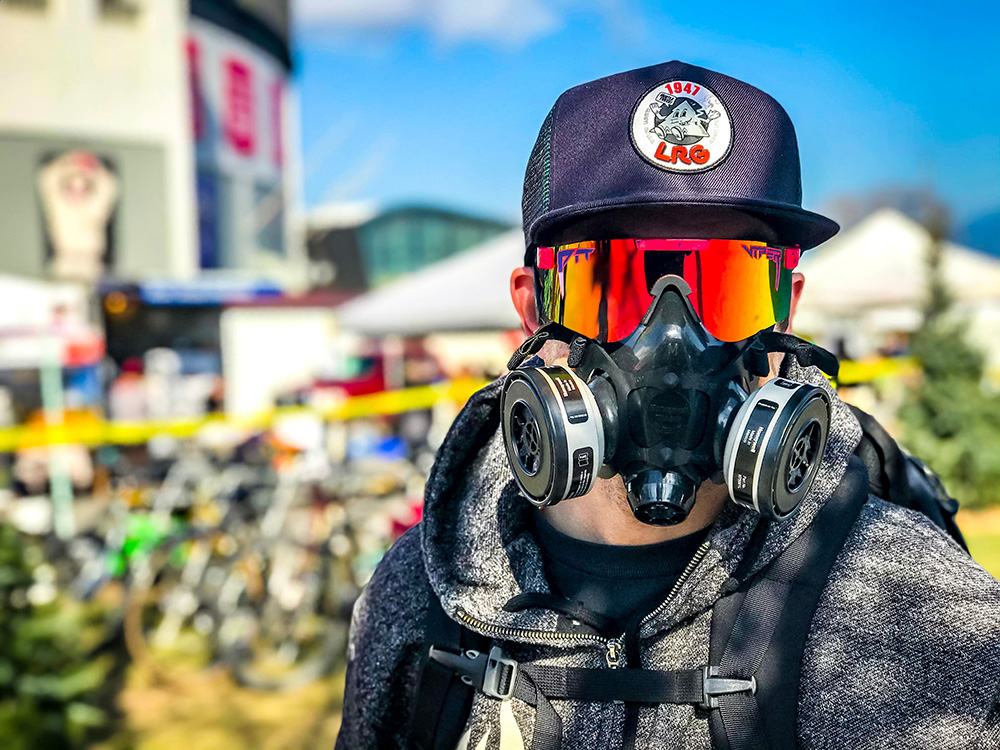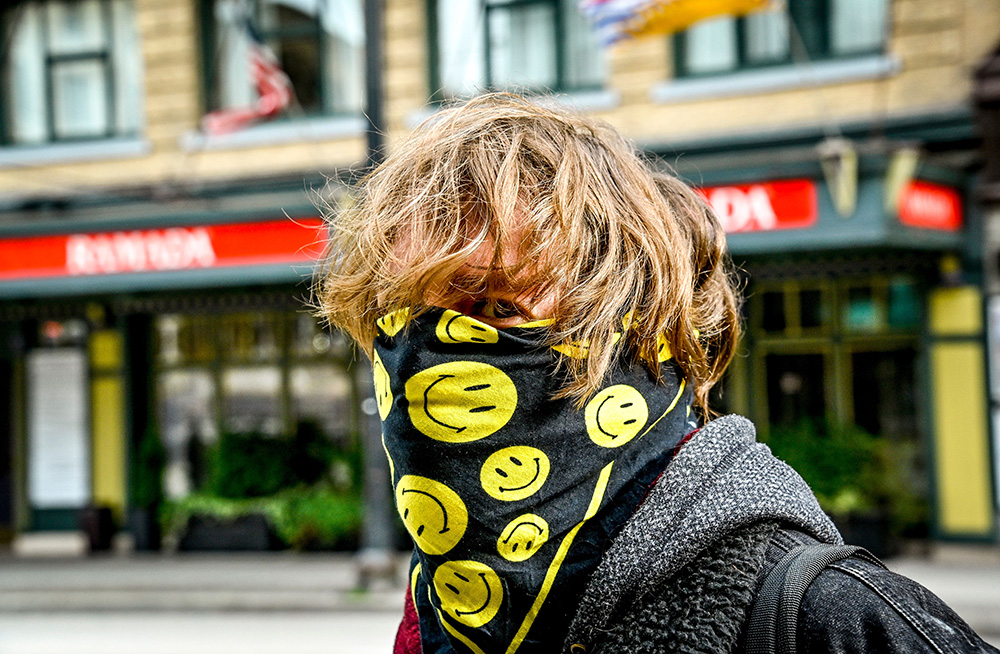Two months ago, two hairstylists took part in an unintended but radical science experiment in Springfield, Missouri.
Springfield is a community of 170,000. At the time not too many people wore masks, because the pandemic felt far away.
The U.S. president, a narcissist and threat to public health, also set a bad example. The vain bully didn’t wear a mask then because it covered his most dangerous weapon: his mouth.
Meanwhile the stylists trimmed and fussed over 139 different hairy and pandemic-weary clients before they realized they weren’t feeling well. Then they tested positive with “the Covid.”
It could have been a super-spreading event (one Michigan bar recently infected nearly 200 people). But it wasn’t. Why not?
The hairstylists wore masks, and so did 98 per cent of their clients. The face coverings ranged from homemade cotton dandies to surgical masks.
And guess what? None of the clients that got tested (67) came down with COVID-19.
The hairstylists also respected other life-preserving social graces. They limited the number of customers and placed the salon chairs further apart.
But the masks really proved that face coverings can and do protect others from infectious droplets that can hover in the air for up to 16 hours.
With pure common sense, the stylists proved that wearing masks scales up as a powerful community tool that protects our breathing spaces. They didn’t wait for the World Health Organization or the Centers for Disease Control and Prevention to do a study, now done.
Leave it to hairstylists to remind us of the power of the Silver Rule, a variation of the Golden Rule: Do no harm to others, and they in turn will not harm you.
In some parts of North America the industrial media, which abandoned the Golden and Silver Rules long ago, regard masks as just another subject for endless debate. Others see mask wearing as some kind of ideological statement.
But I doubt the Missouri hairstylists spent any time worrying about such idiocies. They just felt in their hearts that killing customers or exposing them to risks wasn’t a human thing to do. So they masked up and protected the commons.
How honourable.

One of the first people to cotton onto the power of masks was Nassim Nicholas Taleb, a Lebanese-born mathematician and philosopher of risk.
Taleb warned in late January that this pandemic required a rapid reduction in global mobility including lockdowns and social distancing to prevent exponential growth.
But the functionaries ignored Taleb, because they didn’t understand that a pandemic is a dynamic whirlwind of complexity.
In June Taleb wrote about the masks masquerade and the incompetence of some medical professionals. He noted that bureaucrats (and he calls them imbeciles) wouldn’t appreciate the power of masks because linear thinkers don’t like simple solutions.
The bureaucrats reasoned that one person wearing a mask wouldn’t cut down infection rates by much, and demanded more evidence. What they missed was the compounding effects of two or more people wearing masks.
Wearing a mask, of course, protects others from contagious droplets that can, without a mouth covering, travel eight to 12 feet. (Yes, our social distance requirements are a bit short.)
But as Taleb argued, two people wearing masks changes the scale of the story. A masked duo can reduce any exposure to each others’ viral load by 75 per cent. That matters because this coronavirus gets more contagious the more of it you take into your throat and lungs. So by reducing the viral load by three-quarters, Taleb pointed out, the duo actually will “reduce the probability of infection by 95 per cent or more!”
Which means a posse of masked citizens can increase the effectiveness of masks exponentially.
Much to Taleb’s chagrin, the bureaucrats at WHO and the CDC initially downplayed or lied about the power of masks. They worried, as Canada’s chief public health officer Theresa Tam did early on, that if everyone started to wear masks, then hospital workers wouldn’t have an adequate supply.
But being bureaucrats they couldn’t conceive of a simple solution: people making their own masks or resorting to the marketplace. Or as Taleb put it: “They did not get the inventiveness and industriousness of people who do not need a government to produce masks for them.”
For North Americans, the issue of mask wearing also challenges our exceptionalism and latent racism.
Many North Americans falsely assume that Asians wore masks because they genuflected to authority or conformed to social norms like working bees in a hive.
But none of that is true. In fact, neither China nor Japan, for example, ordered their citizens to wear masks on the same scale as North Americans during the Spanish Flu pandemic of 1918.
The practice of wearing medical masks in China dates back to at least a 1910 plague outbreak in Manchuria. At the time, the mask wearers symbolized modernity and the promise of a hygienic future. China’s annual appearance of flu epidemics combined with the prevalence of dirty air from fossil fuels just made regular mask wearing a sensible habit.

In Japan, people wear masks for a host of different reasons. Donning masks during the flu season is a national custom. During the spring allergy season, sufferers wear masks to keep cedar pollen out of their lungs. Others wear masks to cope with urbanization. Women wear masks to feel secure and to hide the fact they are not wearing makeup. Others strap on masks as a fashion accessory, a practice that began with SARS.
So, as Jordan Sand has written, when this coronavirus came along, it encountered cultures in Japan, China, South Korea and Taiwan where people don’t wait “for statistical data to find comfort in an easily adopted prophylactic device.”
Hong Kong’s low death and infection rates from the coronavirus owe much to the ubiquity of masks (99 per cent) and their compounding effects.
Crowded Hong Kong boasts a population similar to Quebec. But unmasked and spacious Quebec suffered more than 5,600 deaths while Hong Kong recorded eight deaths. Why?
The benefits of wearing masks scales up as more people don them, and protect the commons.
Japan tells a similar story. One of the reasons the pandemic initially moved so slowly in that country can be explained by the custom of mask wearing.
In Tokyo’s packed subways the virus encountered masked consumers who had covered their face for flu protection, privacy or fashion in February. And that blunted the impact of COVID-19 until the flu season ended.
Masks pose other philosophical problems for North Americans. For starters, many of us have trouble reconciling freedom with responsibility and compassion with accountability.
The philosopher Charles Frankel can straighten us out on this account: “A decision is responsible when the man or group that makes it has to answer for it to those who are directly or indirectly affected by it.”
The Missouri hairstylists were responsible.
People in Hong Kong, Taiwan and Thailand were, yes, responsible.
The president of the United States is damned irresponsible.
And Canadian leaders, as Amir Attaran has cogently argued in Maclean's, have botched their responsibility with idiotic messaging on masks.
Many Canadians still cling to the vestiges of cowboy economies in resource frontiers where good people still assume we can get by without a lot of rules or guidance.
Canadians, who have been slow to mask up even compared to parts of the United States, pretend to live in uncrowded and unconnected worlds that no longer exist. The morals of a cowboy economy work well in a sparsely populated frontier; they don’t scale up in a globalized world.

Why, at this point, have we turned a simple act of preservation of self, family and our wider communities into a hot-button debate expressed via video rants and public demonstrations?
The mask masquerade, as Taleb noted, shouldn’t be an issue. Ultimately, there is something about masks that should appeal to every ideological stripe.
Conservatives should appreciate that masks cost less than ventilators, and can ease restrictive lockdowns.
Liberals should embrace the communal nature of the gesture — by protecting others we protect everyone.
Libertarians should embrace masks to protest the authoritarian advance of facial recognition technology — a contagion as dangerous as COVID-19. And to prove that citizens, armed with the facts and left to their own devices, need not be forced to act in their own interests.
A communitarian will recognize that the air we breathe is part of the great commons. Masks prevent that precious commons from becoming contaminated with viral clouds. The breathing shed, just like a watershed, is something we share, and therefore something we must respect and protect together.
The great Republican ecologist Garrett Hardin (and yes there were Republican ecologists 30 years ago) argued that a true conservative rejects any arrangement that allows individuals to sacrifice the interests of others.
He wrote that “the society that survives is the society that develops and conserves rules that serve the long-term interests of society.”
Masks may be the issue today, because COVID-19 has successfully tested our leadership, governance and social cohesion, and found them wanting.
But when this pandemic passes, we will need all the social responsibility we can muster to deal with its aftermath and the other emergencies at our doorstep. ![]()
Read more: Coronavirus
















Tyee Commenting Guidelines
Comments that violate guidelines risk being deleted, and violations may result in a temporary or permanent user ban. Maintain the spirit of good conversation to stay in the discussion.
*Please note The Tyee is not a forum for spreading misinformation about COVID-19, denying its existence or minimizing its risk to public health.
Do:
Do not: